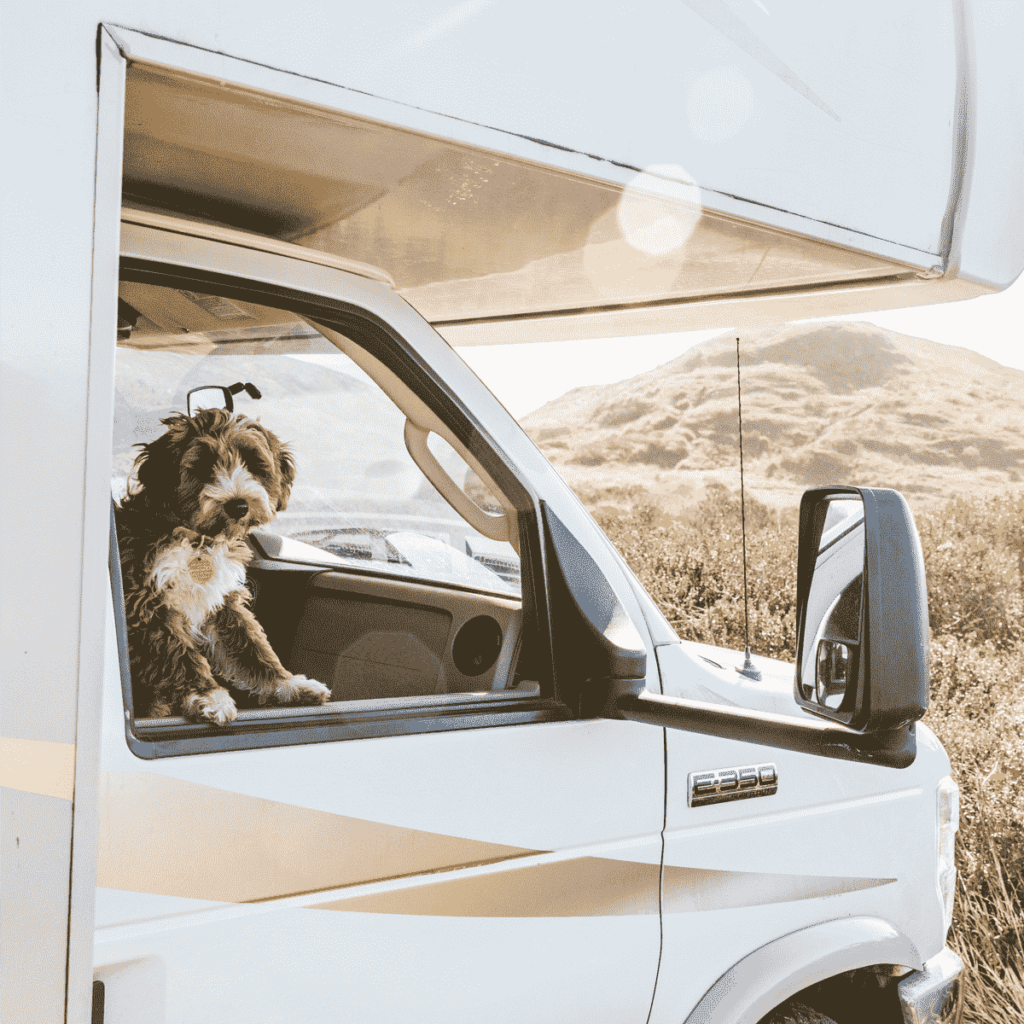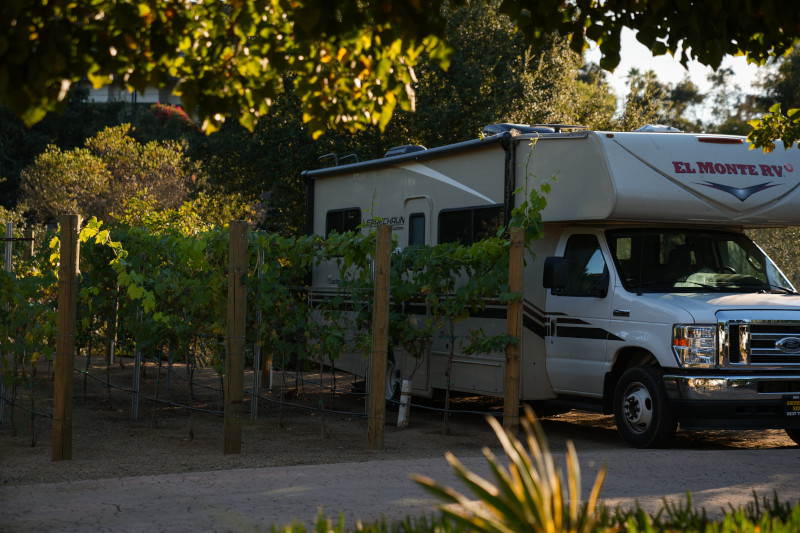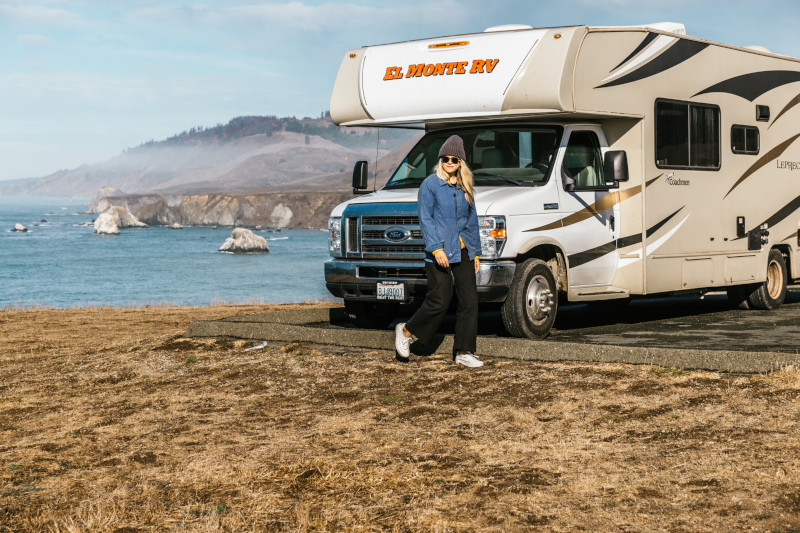Now that you own your RV, you are ready to get out on the open road and have that idyllic vacation you’ve always dreamed of. Or are you? Have you had a driver’s safety course that includes the safe handling of your RV? Have you had enough experience driving the size RV you have to feel confident and comfortable in the driver’s seat?
We suggest that you take a defensive driving approach to driving your RV. Yes, you will be bigger than many vehicles on the road, but you also have other hazards in addition to size issues to consider which you didn’t have in your sedan, station wagon or SUV.
First of all, have you ever driven 25 to 40-plus feet of machinery down the road? It’s vastly different than operating a regular-sized passenger vehicle. Whether it’s a travel trailer, camper, or coach, if you don’t have previous experience in driving one, it can be overwhelming.
Many RVs are nearly the size of an 18-wheeler. For this reason, several states require a non-commercial Class B license if you operate an RV over 40-feet long or 26,000-pounds. Besides state requirements and insurance incentives, you might just feel more comfortable navigating that amount of machinery in a variety of circumstances once you’ve had a few classes.
The best driving classes are similar to those for professional truck drivers. They often include how to make your RV road-ready, RV driving, towing, RV and tire maintenance, fire safety, and how to handle your RV in many different situations like wet or icy conditions.
Where to get RV Driving Classes:
Insurance Companies
Several insurance companies offer RV driving courses to help people avoid accidents, and thereby reduce the financial risk to the company and the individual. Some even offer policy discounts upon verified completion. If you can show the insurance company proof of defensive driving classes in your RV, you should receive a sizable discount on your RV Insurance rate.
Three of the most popular courses recommended by a variety of insurance providers include the following:
- AAA, which focuses on safety and defensive driving techniques.
- RV Safety and Education Foundation (RVSEF) covers basics, braking, tires, towing, and preventative maintenance.
- The Fire and Life Safety Program teaches about the different types of fires and fire extinguishers.
The amount of the discount depends on a number of factors in addition to the successful completion of one of these classes.
RV Clubs
There are several RV clubs that include seminars or classes on ways to improve your driving techniques in their rallies. These are a few of the most popular:
Escapees RV Club
With 20 hours of instruction and several optional additions, the Escapees Boot Camp is about as inclusive as you’re likely to find. Along with the basic course, which covers RV driving, tire safety, towing, and maintenance, to name a few, you can also take a fire safety course or receive personalized “in-your-RV” driver training. You also receive a copy of “The RV’ers Ultimate Survival Guide” (CD version) on RV safety.
To make the information available to those unable to attend the Boot Camp in person, the club offers the RV’ers Online University (RVOU). Besides the traditional topics, new courses are being added regularly to keep up with the evolving needs of RV’ers.
RV Basic Training
Offers a Boot Camp for new RV drivers, held in your own RV. Their areas of training include:
- Individual One on One Driver Training
- Corporate Driver Training – Safety Training
- Mobile Medical Driver Training
- Fifth Wheel Driver Training
- Trailer Towing Training
- House car License Training 40+ Feet
- Group Driver Training and Special Events
- Non-Commercial Class A & Class B Recreation Vehicle License
My RV School
Located in Riverview, FL, they offer one-on-one, behind the wheel instruction for RV owners. Whether motorized or towable, they coach you in your own RV on an hourly basis. A one-hour hands on driving lesson is $160, a two-hour driving lesson is $260 and a three-hour lesson is $360.
“We do hands on training and custom tailor that training to the individual. It’s not a one size fits all training plan,” the owner said. “The biggest thing we find customers want us to teach them is how to back up. People are comfortable driving down the road but backing it up and parking it, they call marriage counseling. A lot of times that’s the most stressful part of the trip.”
They offer instruction in many topics such as: weighing your RV, safe operation behind the wheel and on the road, hitching and unhitching of trailers/tow car, proper turning techniques, backing into a campsite, towing a trailer or car, setting up and tearing down at a campsite, tire safety, RV care, RV maintenance, proper holding tank maintenance and how to use the equipment in the RV. They also offer specialized training to meet any needs.
Family Motor Coach Association (FMCA)
Provided at the RV America Association Safe Driving Course, the six-hour class that is presented over two days focuses on backing up, towing, and what to do during a tire blow-out. It also has a section on sharing the road with truckers, which benefits drivers of both RVs and 18-wheelers.
RVing Women
With classes that run from 8 a.m. to 4:30 p.m. at the Central Tech Transportation and Safety Education Division of Central Technology Center near Tulsa, Oklahoma, instructions supplement the behind-the-wheel training provided. Topics include preventive maintenance and pre-trip vehicle inspection, trip planning and map reading, driving instructions, and tips to reduce driver exhaustion. RVing Women generally schedules this event every April.
Lastly, several motorhome manufacturers also offer classes, instructional videos, and/or hands-on training when you purchase a new RV or travel trailer from them. With so much responsibility behind the wheel, it’s worth it to attend a class when and if the opportunity presents itself. Whether you’re an experienced RV’er or new to the captain’s chair, there’s always more recent information to learn, a skill to hone, or an emergency to avoid and prepare for. You won’t regret it, and it just might save your life.
More Tips for Safe/Defensive RV Driving:
Before you drive:
- Are TV antennae or satellite dishes in position to travel?
- Are all the exterior bay doors closed and latched?
- Are all the awnings folded up? It is easy to forget a small window awning that may be extended as well as the main large awning.
- Are any jacks up, in the travel position?
- Is the area picked up? No toys under or around the vehicle?
- If a trailer, is the hitch correctly hooked and locked? Safety chains attached? Lights connected?
- If pulling a “toad” (small vehicle towed by a motorhome) is the hitch secure and lights working?
- Are any steps folded up, ready for travel? Electric steps on motorhomes may automatically retract when the engine is turned on, but others are manually folded.
- Are all cords, hoses, etc. unplugged and stored away?
- Are all interior cabinets, closets, etc. closed and latched?
- Is the refrigerator door closed and latched? Most of these units have a special latch for travel.
- Are all objects around the interior, particularly in the driver’s compartment, picked up and stored?
- Is the RV overloaded? With the large amount of space available it is quite easy to overload a motorhome or trailer, making the weight considerably over the manufacturers recommended maximum weight. If necessary, drain holding tanks before traveling.
- Is the entrance door securely shut and preferably locked? This is easy to forget in class C motorhomes and trailers as the only passengers may both be in the driver’s compartment.
Driving Tips for Motorhomes and RV’s
As noted above, you are not driving a sports car here. Not even the family mini-van. Special care must be taken in the following areas:
- Defensive Driving. This cannot be emphasized enough. A motorhome cannot stop quickly. It cannot accelerate quickly. It cannot turn or swerve quickly. Attempts at avoidance tactics to drive around an emergency will almost surely fail. The two-second rule in following other traffic is long gone; increase that distance to 5 seconds or more. When someone pulls into the large gap between you and the vehicle ahead (and they will!) slow down to once more increase the distance. Watch further ahead than you are used to. Everyone has heard this time and again, but defensive driving is your primary (and nearly only) weapon in the safety battle. Use it.
- Mirror usage. Many motorhomes and all trailers have no view to the rear except mirrors. Learn to use them and use them constantly. These vehicles have very large blind spots, where other traffic cannot be seen. Watch for traffic coming from behind that gets too close to be seen and then holds that position. When changing lanes, use the mirrors, turn on the turn signals early, and slowly change lanes; cars will hide in your blind spot and can be where you are headed.
- There are many others but suffice it to say you should definitely take an RV Driving class to be sure you are really prepared for safe driving in your RV.
Take Your Time
A large motorhome or RV is not the speediest thing on the road. Understand that it will take longer to get to the campground than a car will. Even if much of the travel is on the interstate system where most motorhomes will generally keep up with other traffic, there will still come a time when speeds fall drastically.
When maneuvering with any large vehicle it is imperative to be aware of the hazards. Posts, sharp turns, low clearances, all are things that will hang you up if you’re not paying attention.
Stay safe, have a plan and make your goal, ZERO DAMAGE!
And, before you take to the road, make sure you check weather conditions where you are going.
Check in with your local El Monte RV Sales location for any questions you may have about driving safely and defensively in your RV.



